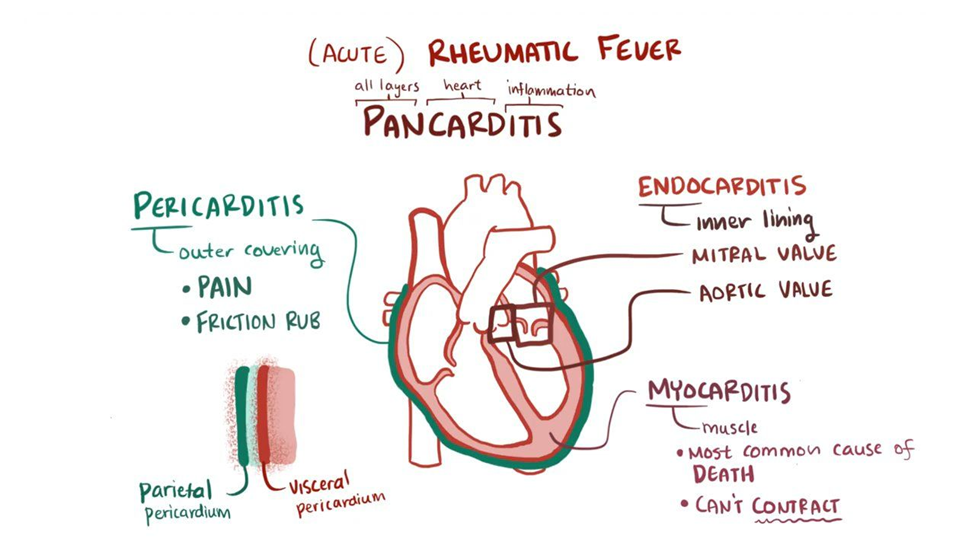A client is being admitted to the medical unit to rule out cardiac issues related to valve malfunction. Which question should the nurse ask the client during the admission interview to support this diagnosis?
“Did you have rheumatic fever as a child?”
“Do you have a family history of valve problems?”
“Do you have a history of MRSA?”
“What over-the-counter medications do you take?”
The Correct Answer is A
A. "Did you have rheumatic fever as a child?"
Rheumatic fever is an inflammatory condition that can affect the heart, especially the heart valves. Rheumatic fever is a known risk factor for the development of valvular heart disease. Asking about a history of rheumatic fever helps identify a potential cause for valve malfunction.
B. "Do you have a family history of valve problems?"
Family history can be relevant in understanding genetic predispositions to certain cardiac conditions. While it may contribute to the overall assessment of cardiac risk, it may not be as directly linked to valve malfunction as a history of rheumatic fever.
C. "Do you have a history of MRSA?"
MRSA (Methicillin-resistant Staphylococcus aureus) is a type of bacterial infection and is not directly associated with valve malfunction. This question may be relevant for other aspects of the client's health but is not specific to ruling out cardiac issues related to valve malfunction.
D. "What over-the-counter medications do you take?"
While knowing the medications a client takes is important for a comprehensive assessment, asking about over-the-counter medications may not be as directly related to ruling out cardiac issues related to valve malfunction. It is more relevant for assessing potential interactions or effects on cardiovascular health.

Nursing Test Bank
Naxlex Comprehensive Predictor Exams
Related Questions
Correct Answer is ["50"]
Explanation
To calculate the drops per minute for the ondansetron infusion, we need to use the formula:
drops per minute = (volume in mL x drop factor) / time in minutes
In this case, the volume is 50 mL, the drop factor is 15 gtt/mL, and the time is 15 minutes. Plugging these values into the formula, we get:
drops per minute = (50 x 15) / 15
drops per minute = 750 / 15
drops per minute = 50
Therefore, the nurse should set the infusion pump to deliver 50 drops per minute of ondansetron to the client with severe nausea.
Correct Answer is ["A","B","C","D","E"]
Explanation
A. Shortness of breath
Shortness of breath can be a symptom of a myocardial infarction in both men and women.
B. Anxiety
Anxiety can be a symptom in some cases, as individuals may feel a sense of impending doom or anxiety during an MI.
C. Unusual fatigue
Unusual fatigue, especially if it is severe or occurs with exertion, can be a symptom of a myocardial infarction.
D. Back pain
Back pain, particularly between the shoulder blades, can be a symptom of a myocardial infarction in women.
E. Chest pain
Chest pain or discomfort is a classic symptom of a myocardial infarction. While women may experience chest pain, they are also more likely than men to have atypical symptoms.
Whether you are a student looking to ace your exams or a practicing nurse seeking to enhance your expertise , our nursing education contents will empower you with the confidence and competence to make a difference in the lives of patients and become a respected leader in the healthcare field.
Visit Naxlex, invest in your future and unlock endless possibilities with our unparalleled nursing education contents today
Report Wrong Answer on the Current Question
Do you disagree with the answer? If yes, what is your expected answer? Explain.
Kindly be descriptive with the issue you are facing.
